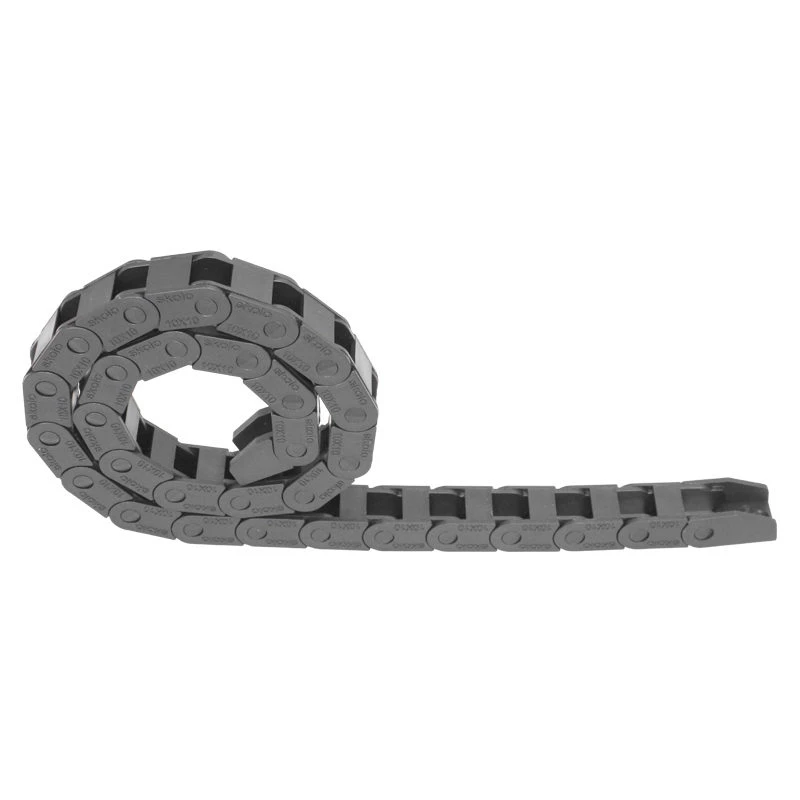cable and hose carrier systems
Understanding Cable and Hose Carrier Systems
In the modern industrial landscape, the efficient management of cables and hoses is critical. Cable and hose carrier systems, often referred to as drag chains or energy chains, play a vital role in protecting and organizing these essential components. They are particularly important in environments where movement, mechanical handling, and automation are prevalent. This article delves into the significance, benefits, and applications of cable and hose carrier systems.
What are Cable and Hose Carrier Systems?
Cable and hose carrier systems are specially designed assemblies used to guide and protect flexible cables and hoses. They consist of interconnected links, forming a continuous chain that travels along a predetermined path. This system allows cables and hoses to move freely without tangling or becoming damaged during operation. Typically made from materials such as plastic, steel, or aluminum, these carriers are engineered to endure a range of environmental challenges, including exposure to chemicals, high temperatures, and abrasive conditions.
The Importance of Cable and Hose Carrier Systems
As industries advance toward greater levels of automation, the need for robust cable and hose management becomes increasingly crucial. These carriers provide several benefits, including
1. Protection The primary function of cable and hose carriers is to safeguard cables and hoses from mechanical wear and tear. By encapsulating these components, the carriers minimize the risk of abrasion, cuts, or environmental damage.
2. Organization In manufacturing and construction environments where multiple cables and hoses are in use, these systems help maintain organization. This not only contributes to a cleaner workspace but also reduces the chances of accidents caused by tangled or messy cables.
3. Movement Efficiency Cable and hose carriers are designed to facilitate smooth movement. They help minimize friction and provide a controlled path for cables and hoses, which is particularly important in applications involving robotic arms, conveyors, or sliding doors.
4. Safety By containing cables and hoses, drag chains reduce the risk of tripping hazards and protect operators from electrical shock or exposure to hazardous materials.
cable and hose carrier systems

5. Extended Lifespan Due to their protective design, these systems can extend the lifespan of cables and hoses significantly, leading to cost savings over time in terms of maintenance and replacement.
Applications of Cable and Hose Carrier Systems
Cable and hose carrier systems find utility across a broad range of industries. Some notable applications include
- Manufacturing and Automation In factories where machines and robots operate continuously, cable carriers help manage the complex networks of power and control cables.
- Material Handling Conveyors and automated guided vehicles (AGVs) rely on these systems to manage power and control lines, ensuring uninterrupted operation.
- Cranes and Hoists In construction and shipping yards, cable and hose carriers facilitate safe and efficient movement of electrical and hydraulic lines.
- Woodworking and CNC Machinery These machines often require extensive cable management, and drag chains provide a reliable solution to prevent cable damage during operation.
- Transportation From automotive assembly lines to aircraft manufacturing, drag chains assist with cable management and connectivity in dynamic environments.
Conclusion
Cable and hose carrier systems are indispensable in maintaining the efficiency, safety, and organization of various industrial applications. As industries continue to innovate and implement automated processes, the importance of these systems will only grow. Investing in high-quality cable and hose carrier solutions not only enhances operational reliability but also contributes to the overall safety and productivity of the workplace. With a wide array of options available, businesses can tailor their cable management systems to meet specific operational needs, ensuring a seamless and efficient workflow.








